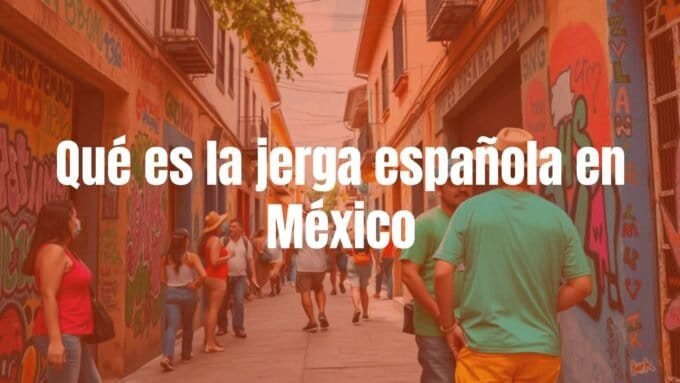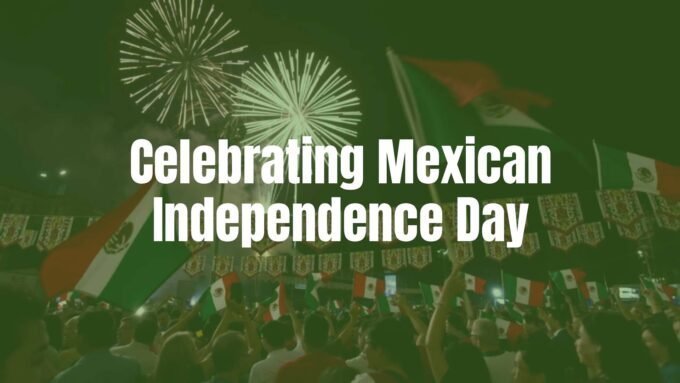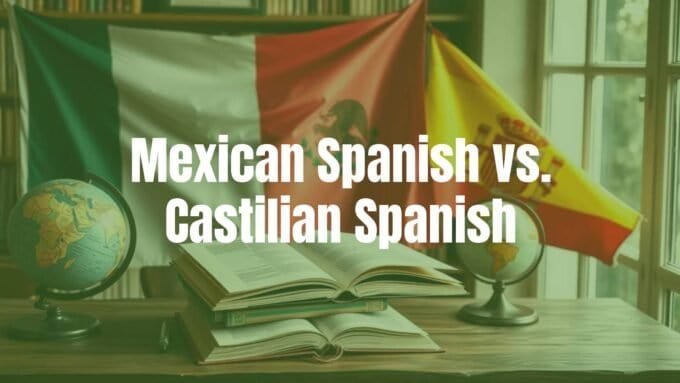Traveling to Mexico, whether you’re going for a short vacation or planning to stay longer, is much more rewarding when you know some basic Spanish. While it’s possible to get by with English in the most touristy spots-like the resorts of Cancun-only around 10% of Mexicans speak any English, and even fewer are fluent. To really enjoy the culture, make connections with locals, and handle everyday activities easily, some Spanish will help you a lot. It’s about more than just asking for what you need-it shows respect and helps open up real conversations, making your visit feel more genuine. With so many Spanish speakers in Mexico, it’s also a great place to practice.
Spanish for Travelers: Why It Matters in Mexico
Think about walking through a busy Mexican market, with the smell of spices in the air and people talking all around. If you know even a little Spanish, you can bargain for souvenirs, ask about local foods, or just share a joke with a vendor. These types of moments are often the ones you remember most. Learning a few basic Spanish phrases will make your trip smoother and more enjoyable, whether you’re working or just exploring.

Spanish is the second-most spoken language in the world, and more than 100 million Mexicans speak it every day at home, work, school, and in public. Even though Mexico recognizes Spanish along with 68 indigenous languages, Spanish is the main language used by nearly everyone. Using Spanish lets you step outside the usual tourist spots and connect with everyday life in Mexico.
Why Knowing Spanish Helps When Traveling in Mexico
- It’s easier to order traditional foods and drinks.
- You can talk with locals about their customs and jokes.
- Public transport and directions become easier to handle.
- You show you respect and care about the culture.
- Staff and passengers on cruises or in tourist areas often appreciate your effort.
Handling buses, getting directions, and coping with surprises is much less stressful if you can speak some Spanish. Even if you know only the basics, people are usually friendly and welcoming when you make the effort.
Big Myths about Language in Mexico
- “Everyone speaks English in tourist areas.” – Not true! You’ll find English speakers at hotels and resorts, but not everywhere else.
- “Mexicans will be annoyed if I make mistakes in Spanish.” – Actually, most people will appreciate your effort and help you along, even if you’re not perfect.
If you only use English, you may miss out on the real Mexico. Trying to use Spanish-even badly-shows interest and respect, and leads to better travel experiences.
Mexican Spanish vs. Spanish in Spain: The Key Differences
Spanish in Mexico is a lot like British or American English-mostly the same, but with some differences. If you’ve learned Spanish in Europe, you’ll notice Mexican Spanish sounds a bit different, and the words and grammar can change too. Knowing a few of these differences makes everyday conversations easier.
Pronunciation
| Letter | In Spain | In Mexico |
|---|---|---|
| “z” and “c” (before i/e) | Sounds like “th” (in “thin”) | Sounds like “s” |
For example, “gracias” is “grathias” in Spain and “grasias” in Mexico. Mexican Spanish generally sounds softer and has a slightly different rhythm too.
Words and Slang
- Spaniards say “coche” for car; Mexicans say “carro”.
- Computer is usually “computadora” in Mexico, “ordenador” in Spain.
- Mexico uses more English-influenced words, especially near the US border.
Slang also changes a lot, so some words or jokes won’t make sense outside Mexico.

Politeness and Formality
Being polite is very important in Mexico. When speaking to groups, people use “ustedes” (the formal “you”) instead of “vosotros” (the informal “you” used in Spain). “Tú” is fine in casual settings, but use formal language (“usted”) for elders or people you don’t know well. Always use phrases like “por favor” (please) and “gracias” (thank you).
Polite Words and Greetings in Mexican Spanish
Saying hello is a key part of life in Mexico. Whether you’re walking into a store, greeting a neighbor, or talking to staff, it’s normal to greet people first. A simple “Hola” is friendly and always welcome.
Common Hellos and Goodbyes
| Spanish | Meaning | When to Use |
|---|---|---|
| Hola | Hello | Anytime |
| Buenos días | Good morning | Before noon |
| Buenas tardes | Good afternoon | Noon to sunset |
| Buenas noches | Good evening/night | After sunset |
| ¿Bueno? | Hello (on the phone) | Answering calls |
| Adiós | Goodbye | Anytime |
| Nos vemos | See you later | Common goodbye |
| Mucho gusto | Nice to meet you | First meetings |
Polite Phrases Everyone Should Know
- Gracias – Thank you
- De nada – You’re welcome
- Lo siento / Perdone – Sorry
- Disculpe – Excuse me (to get attention)
- Con permiso – Excuse me (to pass by)
- Muy amable – Very kind
- ¿Mande? – Sorry? / What? (polite)
Even if you only remember these, they will be noticed and appreciated.

Mexican Slang: Helpful Words and Everyday Phrases
Mexican Spanish has lots of slang, and it changes all the time. While classic Spanish will work anywhere, learning a few local phrases helps you fit in and makes conversations with locals more fun. Just be careful: some slang is very informal or not suitable in polite company, so pay attention to when and how people use it.
Popular Slang Examples
- ¿Qué onda? – What’s up?
- ¡Qué padre! / ¡Qué chido! – That’s cool!/Awesome!
- ¡No manches! – No way!/Come on!
- ¡Aguas! – Watch out!
- güey – buddy/dude (informal, not used with strangers)
- fresa – snobby or stuck-up person
When Should You Use Slang?
Use casual greetings and words like “¿Qué onda?” with friends and people your age. Avoid strong slang or curse words unless you really know what you’re saying and who you’re talking to. Words like “Me vale madre!” are very strong and should be avoided unless you’re with close friends who use them. If you’re unsure, stick with basic polite language.
How to Order Food and Drinks in Spanish
Mexico’s food is famous and worth exploring. To get the most out of the experience, knowing how to order in Spanish is helpful. Whether you’re at a food stand or a nice restaurant, these phrases will help you understand menus and ask for what you want.
- It’s normal to leave a 10-15% tip at restaurants.
- Say “Joven” or “Señorita” to get your server’s attention.
Menus and Recommendations
- “Una mesa para dos, porfa.” – A table for two, please.
- “El menú, por favor.” – The menu, please.
- “¿Qué me sugiere?” – What do you recommend?
- “Quiero…” or “Me gustaría pedir…” – I want/I’d like…
- “Para beber…” – To drink…
- “La cuenta, por favor.” – The bill, please.
Special Diets and Ingredients
- “Soy vegano/a.” – I am vegan.
- “Soy vegetariano/a.” – I am vegetarian.
- “Sin queso.” – Without cheese.
- “A un lado.” – On the side.
- “Mi comida está fría/caliente.” – My food is cold/hot.
- “Solamente media porción.” – Only half a portion.
- “¡Buen provecho!” – Enjoy your meal/Bon appétit.

Shopping and Bargaining in Markets
Shopping in Mexico, especially at local markets, is a highlight. It’s normal and even expected to bargain a bit. Being polite and friendly is the best way to get better prices and enjoy the process.
Numbers and Money in Spanish
Knowing how to count is important. Learn numbers 1-20 at minimum, and numbers up to 100 help for shopping. For example:
- ¿Cuánto cuesta? – How much is it?
- ¿Qué precio tiene? – What’s the price?
- ¿Cuánto va a ser? – How much will it be (in total)?
How to Bargain and Turn Down Offers
- “¿Me lo deja más barato?” – Can you give it to me for less?
- “Es demasiado caro.” – It’s too expensive.
- “Solo estoy viendo, gracias.” – I’m just looking, thank you.
- “No, gracias.” – No, thank you.
Use these phrases to be friendly but clear when you negotiate or when you don’t want to buy something.

Getting Around: Directions and Transport Words
Getting used to a new city can be hard, but with some basic Spanish you’ll find it much easier to get where you want to go. People are generally happy to help, just remember to be polite. For safety, use official taxis or shuttles especially in big cities.
Key Questions for Directions
- ¿Dónde está…? – Where is…?
- ¿Dónde está el baño? – Where is the bathroom?
- ¿Dónde está la playa? – Where is the beach?
- ¿Qué tan lejos está de…? – How far is it from…?
- ¿Se puede ir caminando? – Can you walk there?
- Estoy perdido/a – I’m lost.
Transport Vocabulary
- ¿Dónde puedo tomar un taxi? – Where can I get a taxi?
- ¿Puede llevarme por favor? – Can you take me, please?
- Estación de autobús/tren – Bus or train station
- ¿A qué hora sale el camión? – What time does the bus leave?
- ¿Cuánto cuesta el pasaje? – How much is the fare?
- ¿Dónde me bajo? – Where do I get off?
Emergency Words and Medical Spanish
It’s important to know what to say if you get sick or there’s an emergency. Medical care is usually good in Mexico, but speaking some Spanish will help you get the care or support you need.
- Keep a note of local emergency numbers.
Expressing Medical Problems
- Estoy enfermo/a – I am sick.
- Me duele la cabeza – My head hurts.
- Busco una farmacia – Looking for a pharmacy.
- Necesito un doctor – I need a doctor.
- Quiero tomar una prueba – I’d like to take a test.
How to Ask for Help
- ¡Auxilio! / ¡Ayuda! – Help!
- Llama a la patrulla – Call the police.
- Es una emergencia – This is an emergency.
- Necesito ayuda – I need help.
Ways to Get Better at Spanish While in Mexico
Being surrounded by Spanish is the fastest way to learn. Every conversation, street sign, or shop visit becomes a chance to practice. Don’t be afraid to make mistakes-everyone does, and it’s part of learning.
Practice in Daily Life
- Try to talk to locals, even if you only know a few words.
- Ask basic questions-about time, directions, or food.
- Take notes of new words and practice them later.
- Read signs, menus, or local newspapers for practice.
The more you try, the more you’ll improve.
Typical Mistakes and How to Avoid Them
- Don’t translate directly from English-idioms and phrases can get mixed up. For example, “embarazada” means pregnant, not embarrassed!
- Use the right formality; “usted” is polite, “tú” is informal. Listen and copy what locals do.
- If you’re unsure, ask, and most people will help you out.
Tech and Learning Aids
- Apps like Google Translate can help you read menus and signs instantly.
- Try language apps (such as Babbel) with Mexican Spanish lessons.
- Listen to Mexican music and try to follow the lyrics.
- Watch TV shows or movies in Spanish with subtitles.
- Keep a Spanish phrasebook handy for quick help.
Common Questions about Spanish in Mexico
Will locals understand my “tourist Spanish”?
Yes! Any effort to use Spanish is valued. Simple words and polite phrases make a big difference, and people will usually try to understand you. Don’t worry about mistakes-trying is what counts.
Is it easy to find English speakers in tourist areas?
In places like Cancun, Playa del Carmen, and big city hotels, English is common. But go outside these areas, and you’ll find mostly Spanish. Relying only on English can limit your experiences.
Should I be embarrassed about making mistakes?
No. Making errors is part of learning, and most Mexicans will admire your effort and may even help you improve. Mistakes are normal and often lead to great stories and real conversations.














Leave a comment